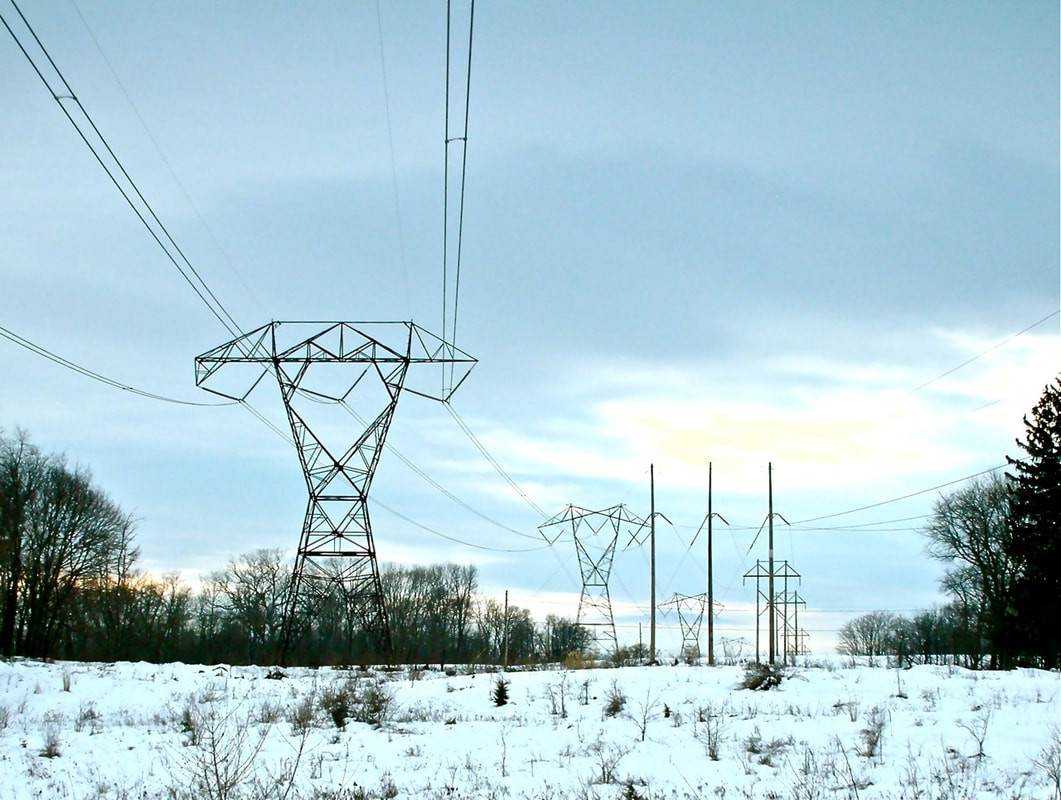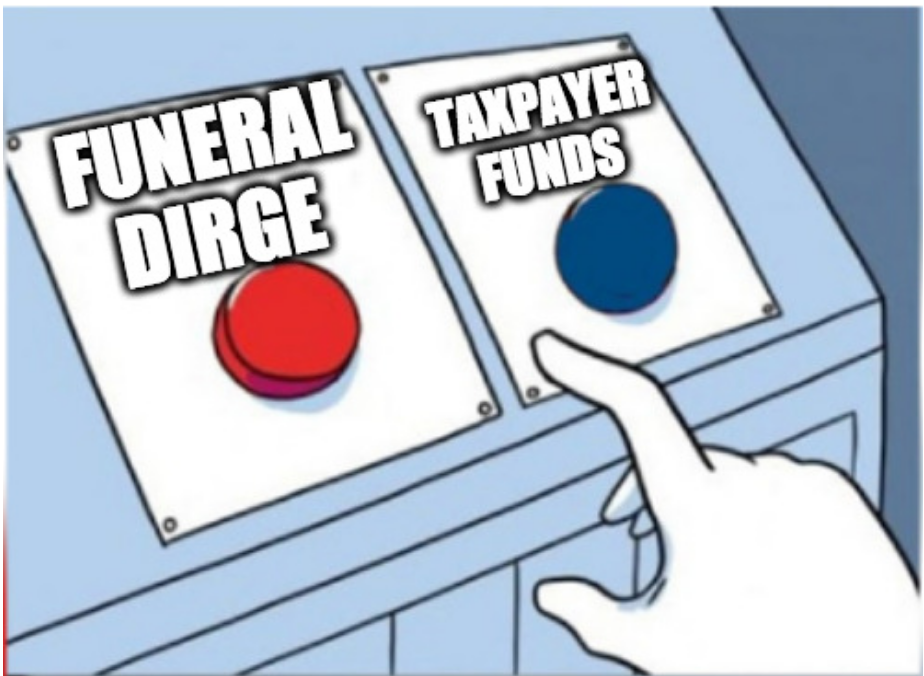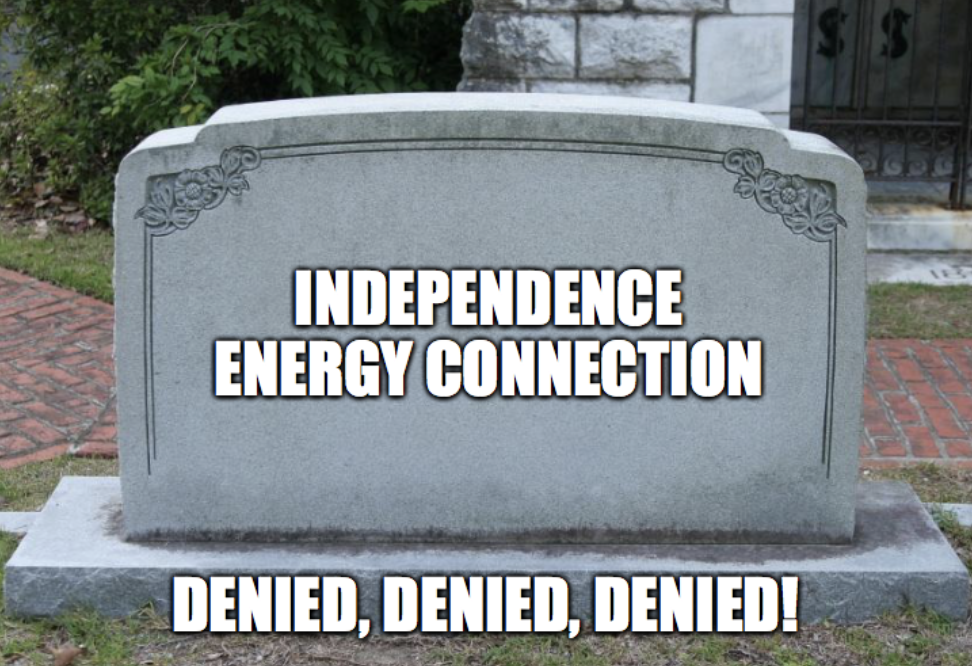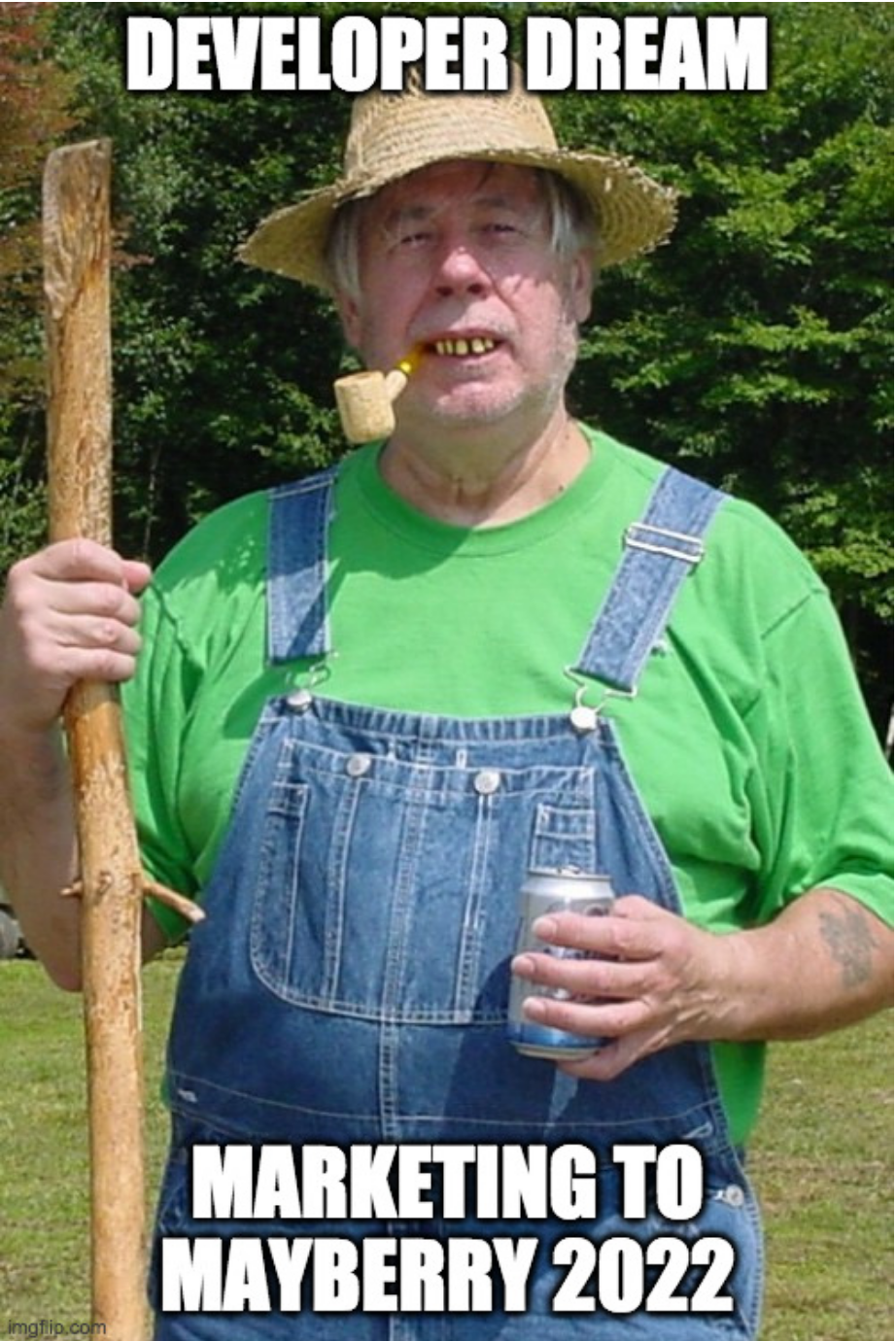They say that recognizing your flaws is the first step in solving your problem, but I'm not so sure these folks get it yet. The solution is simple... don't cause impacts to land use and community values. If you don't cause impacts, nobody cares all that much, certainly not enough to invest years of valuable time, and years of personal savings, fighting transmission proposals. It's just that simple!!!
This vapid article on CNBC is not accurate. Here's just one snippet of its inaccuracy:
On June 16, FERC issued issued a first step — technically called a “notice of proposed rulemaking” — that it aims to amend laws making it easier to connect sources of electricity to the grid.
Another fallacy...
The most productive geographical regions for wind and solar are generally far away from urban centers where the energy is needed.
There’s also the possibility of putting transmission lines underground, which, “is much more economic today than it used to be,” Gramlich said. But it’s still expensive, as much as ten-fold the cost, depending on the terrain you are trying to go through, according to Robb of NERC. In some cases, for example, putting a transmission line means blasting through granite. So, while “that’s a viable thing to do, it’s a very expensive thing to do,” according to Robb.
So, the cost of cleaning up cities is not "too expensive" but the cost of avoiding impacts in rural communities is "too expensive." This is nothing more than a value judgement -- the cities are "worth it" but the rural areas are not.
What do any of these people (including the reporter) know about what motivates transmission opposition? Only Sandy Howard knows, and the reporter conveniently wrote little about why Howard has devoted many years of her life to stopping NECEC. Instead, the reporter focuses on the competing energy companies who poured money into stopping NECEC for their own reasons. The reporter tries to make you believe that transmission opponents are just figureheads doing the bidding of fossil fuel companies who want to stop new transmission. That's not true at all. In fact, in my 15 years doing this, I have not seen any energy interests get involved in a transmission battle, except that one. One instance does not make a trend. These people need to quit making excuses and stop underestimating grassroots opposition.
If they want to end opposition, they need to find out what's causing it, and there's no better way than to engage with transmission opponents. However, these self-congratulating chuckle heads prefer to insulate themselves and simply make crap up. Such as this lovely theater at a recent industry nerdfest:
Overcoming NIMBYism on TransmissionLast August, the Niskanen Center and the Clean Air Task Force released a report that called for adoption of the “5 P framework” to overcome opposition to clean energy infrastructure. The construct builds on the transmission concept of “planning, permitting and paying.”
“We propose adding ‘participation’ as a fourth ‘P’ and then ‘process’ as [the fifth]. Because one of the challenges of transmission [is that] every single project is unique, because every state in every region is different,” said Liza Reed, Niskanen’s electricity transmission research manager for climate policy. “The reason that we raise participation up to an equal level with the other Ps … is that groups are really siloed in each of those policies right now. There is stakeholder engagement in planning. There is stakeholder engagement in permitting. There is stakeholder engagement in paying. But different stakeholders get brought in at different points, and that’s when groups start getting frustrated. And I think when folks hear the word ‘participation,’ they think angry town halls and lawsuits. But the whole point of bringing participation into a consistent process is to avoid that.”
Lawrence Berkeley National Laboratory’s Joseph Rand offered an observation from his analyses on the siting and community impacts of large-scale wind and solar.
“What the wind energy developers have learned over time is that we need to move away from a process that people call ‘decide, announce, defend,’ [to one] called ‘consult, consider, modify, proceed,’ so that you’re meaningfully engaging local stakeholders in that process and being open to actually modifying your proposal,” said Rand, senior scientific engineering associate for the lab’s Electricity Markets and Policy Group.
And if you thought their ideas were bad, how about these from the CNBC article?
To spur grid expansion, the federal government should consider a tax credit for large scale transmission investment in current budget reconciliation policy discussions and the FERC proposed rule for expansion, he said.
And then there's this:
Congress needs to act to give a federal agency, either the Department of Energy or the Federal Energy Regulatory Commission (FERC), authority to site transmission lines. “They could pass a statute that’s about one page long,” Pierce told CNBC in a phone conversation at the end of May. “This is not hard to accomplish if you’ve got the political will.”
Pierce knows that there will be opposition to such a federal authority, to which he says: Too bad.
“You cannot allow the citizens of a single state to block actions that are imperative for the welfare of the citizens that the whole country much less can you can you afford to allow the citizens of one little town or one landowner to,” Pierce said. “It’s just frustrating."
Again... why do this when the real solution is so much simpler? Several contemporary examples prove that siting transmission underwater or on existing rail or road rights of way does not attract opposition. SOO Green Renewable Rail. Champlain Hudson Power Express. Lake Erie Connector. New England Clean Power Link. Vermont Green Line. Clean Path New York. Need I go on? These are the transmission projects that are sailing through siting and permitting because they don't require new rights of way and they don't impact host landowners or communities.
We've been beating this drum for several years now by sharing this idea any place we can. Maybe some of these morons are starting to catch on, but prefer to pretend it was their own idea?
Also, Gramlich sees a potential path forward in upgrading existing transmission lines. There, you don’t have the siting battles. “Reconstructing or replacing the old lines with new lines is a is a major opportunity,” he told CNBC. “There’s very little public opposition to transmission over existing corridors.
Quit wasting time, energy, and money on stupid, ineffective ideas to quell opposition. The only way to avoid opposition is to bury new transmission on existing rights of way.
Now get crackin'. Time's a wasting.






 RSS Feed
RSS Feed